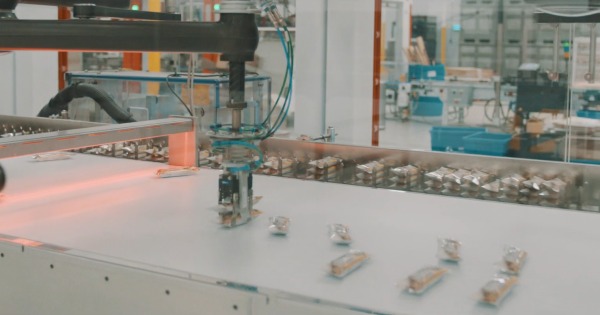There’s no excuse for poor quality in manufacturing. A connected, properly trained and enabled workforce is your best defense.
Product quality can be a make-or-break for manufacturing success, reputation, and profitability. But as the worsening skills shortage ripples throughout the industry, manufacturers face new strains to ensure frontline workers are trained correctly and equipped with the correct tools to keep standards high.
Today’s demanding customer base won’t settle for anything less than high-quality goods. In fact, 70% of consumers are willing to leave their current brand if they find a higher-quality alternative. The sooner companies can catch errors or mistakes before they become recalls, the better. In the U.S., product recalls rose to a seven year high in 2023—an 11% increase from 2022 figures. 2023 was a record year for fines with $55.3 million issued.
Add to this recent pain points such as skills shortages and an aging, diminishing workforce, it’s time manufacturers shifted their mindset towards the connected worker to boost quality control within manufacturing.
Learn from the past to drive the workforce of the future
Between an aging workforce, and the difficulty to attract new workers, the manufacturing industry is fraught with problems and a growing shortage of skilled labor. But on its very own shop floors exist years of knowledge and expertise from its current workers, the very human tools that will help manufacturers uphold quality standards.
Without the correct systems in place, the knowledge from experienced workers goes undocumented, and a lack of standardized processes stop manufacturers from capturing crucial information, the sort of information that could easily result in product recalls.
Now, with the addition of connected worker technologies, manufacturers can tackle countless pain points felt by today’s companies, simply by connecting training and empowering frontline workers.
When you put the connected worker at the heart of your operations, the entire quality lifecycle is enhanced – workers are fully trained on the latest standards, new quality efficiencies can be realized as algorithms and data are analyzed, and the risk of product recalls are minimized.
Never underestimate the power of human intelligence
Of course, machines and technology are getting smarter—but so are humans, and having the two work in tandem can help manufacturers reap real rewards in the fight for continuous improvement of product quality.
Yes, the ERP system-of-record is the foundation of managing food safety and reducing product recalls, but it’s the frontline workers in these operations that will make or break a successful quality and food safety operation before it leaves the factory.
Connected, trained, and empowered workers are essential to add a frontline layer of quality control and an all-seeing eye on what’s happening on the shop floor. Giving workers the ability to access and analyze data based on algorithms and use cases will drive efficiencies across quality control. We see this with features like Digital Forms and Issues Management from Poka Inc., an IFS company, which give frontline workers the tools to perform essential quality checks.
Learning on the job: The power of real-time information to spur advanced worker training
Poka’s connected worker platform provides the opportunity to learn from other workers and their manufacturing experiences. It enables manufacturers to take their best, most knowledgeable employees and capture and reuse their knowledge. They can ensure the best people are training new employees to the best possible standards—and they only have to do it once.
The results? When frontline workers are fully trained on the most up-to-date processes and standards, they contribute to the organization’s ability to reduce waste, optimize production efficiency, and, crucially, minimize defects. The 70:20:10 model, which puts collaborative working on top of the learning and development scale, is precisely how training and development works for frontline workers on the shop floor. As opposed to simply telling workers to ‘go on a course’ the model focuses on 70% of learning on the job, 20% of learning through colleagues and 10% via formal training programs.
Further technology integration to combat quality issues across the entire product lifecycle
Integrating connected worker platforms alongside enterprise resource planning (ERP) software gives manufacturers embedded functionalities to address the entire quality lifecycle—from supply chain management, manufacturing work in progress, and maintenance, through to warehouse management, and distribution.
It’s about ensuring connectivity across an entire organization – so often global nowadays – to drive continuous quality improvement. By giving frontline workers the tools to document quality checks, and access information to stay compliant and proactive, manufacturers can empower a company-wide culture of innovation. When the focus is shifted to empowering your frontline workers, you’re able to give your teams the tools to identify opportunities for improvement.
Removing the risk of recalls with embedded technology
The need to ensure transparency and control across the entire manufacturing lifecycle is essential. In the food and beverage sector for example, food safety is a top priority, and it’s where an ERP system can uphold quality control standards.
Product recalls are costly and can negatively impact brand equity.
Poka customer Barry Callebaut, a family-run food processing business, has significantly improved its time to capture quality issues, helping execute faster, more dynamic problem-solving. It allows Barry Callebaut to see through visuals such as pictures and videos, what happened in previous shifts, and share accomplished activities. The company can easily socialize defects and issues through the same media and escalate them to management.
SOURCE: Slowik M. (2024, Jul30) Ensuring Quality in Manufacturing: Empowering Your Workforce for Excellence.IFS Blog. https://blog.ifs.com/2024/07/ensuring-quality-in-manufacturing-empowering-your-workforce-for-excellence/.

